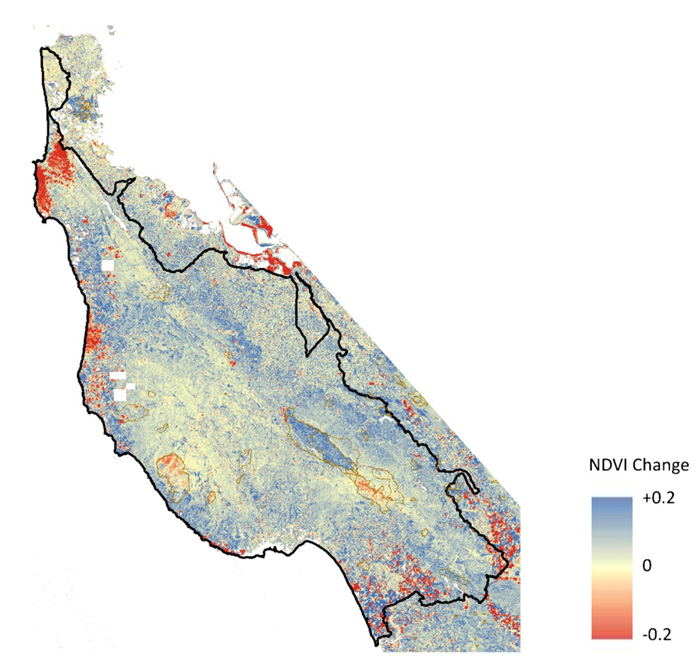| Follow @co2science |
Paper Reviewed
Potter, C. 2016. Thirty years of vegetation change in the coastal Santa Cruz Mountains of Northern California detected using landsat satellite image analysis. Journal of Coastal Conservation 20: 51-59.
In a detailed study of a Landsat satellite image time-series beginning in 1983, Potter investigated the evolution of the normalized difference vegetation index (NDVI), as manifest throughout the coastal Santa Cruz Mountains of Northern California. And what did he find by so doing?
The NASA researcher reports that since 1983 this region has exhibited a gradual and statistically significant increase in NDVI in more than 90% of the predominantly second-growth evergreen forest locations (see figure below), while further noting that "repeated drought periods have not slowed evergreen forest regrowth rates in a notable manner."
Consequently, Potter concludes that "the findings from this Landsat image analysis in the Santa Cruz Mountains suggest that NDVI has increased significantly throughout the forests of the study area over the past 30 years," adding that "variations in precipitation over the past 30 years have had few detectable impacts on forest cover change."

Map of the changes in NDVI between 1983 and 2013 for the Santa Cruz Mountain study area. Fire perimeters are outlined in rust. Cloud cover is masked as white. Source: Potter (2016).




